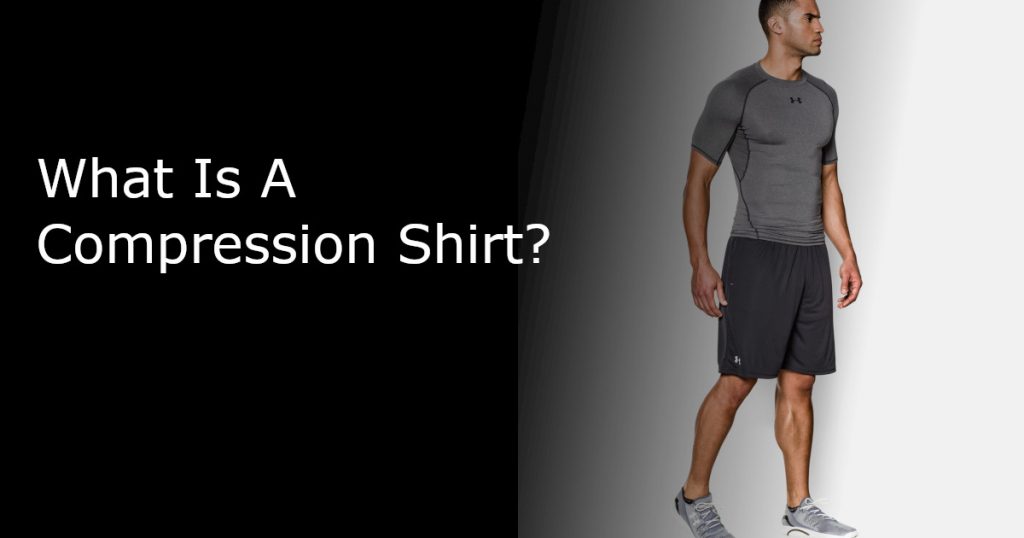Many athletes and avid gym-goers swear by the effectiveness of compression garments. In the olden days, people into sports and fitness used to wear…whatever. But now, it’s impossible to go to sporting events or step inside the gym without seeing people in skin-tight shirts.
But do compression shirts really work? Are they worth the price? How did it get a tight grip on the market?
This article talks about everything you need to know about compression wear, starting with the classic: compression shirts.
Contents
What is compression clothing?
So one day, you walk inside your local gym and see that everyone is wearing tight-fitting shirts, shorts, and socks. Those are the different types of compression garments. They are made of materials that stretch for fit while providing your pressure and additional support to your body.
People use them for a variety of reasons. Athletes wear compression shirts for muscle support and faster recovery. This type of clothing also supports treating people with gynecomastia, inoperable hernias, postpartum conditions, or other health-related reasons.
And lastly, compression shirts are very comfortable to wear. They are lighter in weight and feel than usual everyday shirts, and they also flatten the bulges and curves, giving you a leaner look.
What are the benefits of compression shirts?
Now all this hype couldn’t just come from nowhere. Present findings suggest that by wearing compression clothing, runners may improve many variables. Fitness enthusiasts and athletes have tried and tested compression shirts and were satisfied. Here are some of the reasons why:
1. They provide support.
Wearing compression shirts during training provides your body with additional support and stability. When you train or exercise, the compression shirt will add pressure to your muscles while also supporting some of the strain.
2. They help you stay dry.
Soaking in your sweat while exercising is extremely uncomfortable. Compression shirts help address this problem because it is made up of polyester or nylon. Unlike cotton, these materials allow you to dry quicker when you sweat. They are not water repellent, but what they do is lift the sweat upward towards the fabric’s surface to evaporate quickly.
3. They are a breathable type of clothing.
Compression shirts may be tight-fitting, but it is made of breathable materials. They are designed to provide air circulation to ensure that you stay cool during training or exercise.
4. They help improve flexibility.
Staying active means you move a lot. You stretch, lift, run, and do a whole lot of different movements. Compression clothing is stretchable. No matter what activities you do, it doesn’t hold you back. Loose clothing can be an option to move freely, but baggy clothes could be dangerous. Wearing tighter but stretchy clothing, on the other hand, allows you to exercise comfortably and safely.
5. They help reduce muscle soreness.
Sore muscles are almost always guaranteed a day after your workout. Had an arm day session today? Good luck lifting your arms to put on your clothes tomorrow. Compression shirts are an excellent option to help reduce soreness after workouts.
A review on the same topic by exercise scientist Jessica Hill, M.S.c., says that “When compression garments are worn during and after heavy exercise, they appear to reduce muscle soreness.”
6. They help speed up recovery.
Wearing a compression shirt after exercise can help enhance muscle recovery and rebuilding. Think of RICE: Rest, Ice, Compression, Elevation. Compression has always been part of treatment procedures for injuries like a sprain.
7. They are also stylish.
Aside from the functional benefits mentioned above, compression shirts also make you look good. As previously mentioned, the tight fit flattens the bulges and curves in unwanted places and makes you look leaner. And if you already have built some muscles, compression shirts will help further define those muscles. Perfect for people who want to take photos to document their progress or post on social media.
What to consider before buying a compression shirt

If you’re planning to buy your first compression shirt soon, here is a list of what to consider before making that purchase:
1. Purpose
First, you must know why you want or need a compression shirt. Is it for exercise/training purposes? For medical treatment? Or for comfort and style? Knowing what you will use it for will help you narrow down your options better.
2. Cut
Compression shirts come in different types. There are short sleeves, tank tops, long sleeves, and v-necks. If you intend to wear your compression shirt under another layer of clothing, your best option is the v-neck type. You wouldn’t want the sleeves and collars of your undershirt to show up.
3. Material
As mentioned earlier, compression garments are made of a combination of nylon and spandex. However, the ratio can vary. Usually, shirts with more nylon provide firmer compression and are less stretchable. Those with more spandex, on the other hand, stretch more but are less firm. Some compression shirts even include breathable cotton liner for a softer feel.
4. Layers
It would be best if you chose a shirt with the right amount of compression to hold curves and bulges in areas you want. Some shirts add extra layers to provide additional compression in specific problem areas.
5. Seams
Seams are often overlooked during the research process, but they are equally as important. You want seams that lay flat because these seams don’t cause pressure discomfort, and they minimize bunching (vital if you will use compression shirts as undergarments). Also, make sure that armholes are cut in a way that still allows you to move freely. This will not only make you feel comfortable but also minimize the possibility of underarm seam irritation.
Choose what works best for you.
Now that you know what compression shirts are, what benefits they can bring you, and what to consider before you buy one, you can make a more informed decision if you really want to get one for yourself. Whatever purpose you may have, the most important thing to remember is to choose the shirt that will work best for you. Each person has different needs and levels of comfort. Make sure you buy one that supports your level of activity. And when you finally have it, wear your shirt daily so you can integrate it in your day-to-day life and see if it will work for you.


